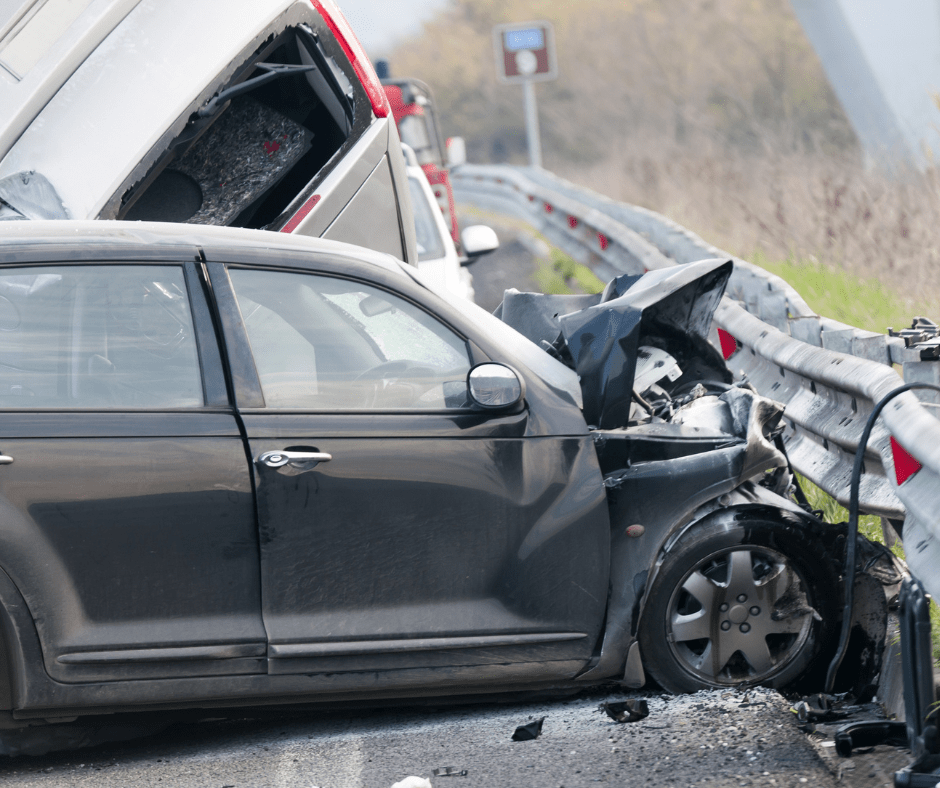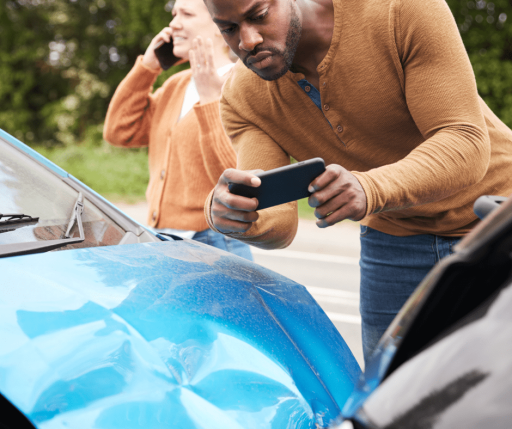After a multi-vehicle accident, it can be difficult to determine fault. The legal definition of “fault” could depend on a variety of factors, including how many vehicles were involved, the state where the accident occurred, and the details in the police report.
In this blog, we’ll discuss the ins and outs of determining fault in a multi-vehicle accident and how hiring a personal injury lawyer can help you navigate the process.
Let’s dive in.
Multi-Vehicle Accidents, by the Numbers
Multi-vehicle crashes are common. According to The National Highway Traffic Safety Administration (NHTSA), police departments reported more than 5.25 million crashes in 2020.
During those accidents, 2.28 million people were injured, and about 39,000 people were killed. Meanwhile, 3.6 million of the crashes involved property damage.
How is a Multi-Vehicle Crash Defined?
A multi-vehicle crash involves no less than three drivers in three different vehicles. Multi-vehicle collisions can be minor, such as slow-speed pileups at stop signs, or severe, such as the multi-vehicle crash that shut down SR-417 southbound near the Florida Turnpike.
When they occur, multi-vehicle crashes can be very dangerous. That’s because most multi-vehicle crashes happen when one vehicle rear-ends another. This sets off a chain reaction in which the force of the first collision causes the car following to crash into the back end or forces the impacted vehicle forward into the car in front of it.
When a line of cars is following too close, or the vehicles are traveling at high speeds, it quickly becomes a multi-vehicle accident.
In most accidents like this, the first two cars involved generally cause the rest of the property damage for the rest of the cars. Still, the first driver to cause the wreck is typically considered the “at fault” party.
What Kind of Evidence is Available After a Multi-Car Crash?
Multi-car crashes usually produce a large amount of evidence – especially when they occur in the range of traffic cameras or within the scope of a highway patrol person’s dash cam.
In some cases, though, the cause of the collision requires more examination. In these situations, lawyers will investigate the circumstances surrounding the accident, review photographs of the scene, and consult the official police report.
When the lawyer has a sense of who is responsible for the accident, they can proceed accordingly.
How Fault is Determined in a Multi-Vehicle Accident
After a multi-vehicle auto accident, there are multiple ways to determine fault. Here are a few:
1. The drivers or witnesses at the scene agree who is at fault.
After a collision, drivers or witnesses may inadvertently determine fault. The time immediately after an accident is emotionally charged, and it’s easy for people to point fingers at one another. In some cases, a driver could be so emotionally shaken-up that they take the blame on themselves.
To prevent this, it’s important to avoid making claims of blame after an accident. People involved in the accident should use a cell phone to take pictures of the vehicles involved, the scene, and the surroundings. And then wait for the police to arrive to create a formal police report.
2. The police determine who is at fault.
When the police arrive, they’ll call for medical help for anyone hurt and then get to work creating a police report for the accident.
During this process, the police will note any circumstances that caused the accident, such as a drunk driver, speeding, cell phone use, or severe weather conditions.
They’ll consider all this information and use it to create an official crash report.
If you’ve witnessed an accident, you should speak up about what you saw to the police so they can draft an accurate report.
3. Insurance companies collect statements and decide for themselves who is at fault.
Sometimes, insurance companies determine fault after a multi-vehicle accident. If the people involved in a collision file claims with their insurance companies, the insurers will work to make a determination of fault, depending on the circumstances of the accident.
To do this, they’ll ask for the official crash report, witnesses’ contact information, and other details. This information allows them to decide who they believe is at fault in a collision in Florida.
4. A jury decides
If your multi-vehicle claim ultimately ends up in court, a jury will make a determination of who they believe was at fault in the accident. However, it’s important to note that only a small percentage of cases actually make it all the way to court. Most cases are settled by the parties long before then.
Still, you may choose to hire an accident attorney or a personal injury lawyer to help you pursue your case if it involves a drunk driver, an injury, or a wrongful death, among other things.
Personal injury attorneys can work with you to help you navigate the process of negotiating an injury accident claim with your insurance company. Since most lawyers manage to settle claims out of court, hiring an attorney is the fastest and most efficient way to put this experience behind you.
When to Hire an Accident Attorney After a Multi-Vehicle Crash
You need to hire an accident attorney if you’ve been involved in a multi-vehicle accident. The reason is simple: injury claims are complex to navigate, and having a legal professional on your side will allow you to move through the process as efficiently as possible.
Ward & Barnes, P.A. specializes in helping clients throughout Florida with the aftermath of a multi-vehicle collision. You’ll never pay a fee upfront to secure our services. Instead, you only pay if we make a recovery on your case.
You don’t have to navigate the aftermath of a collision alone. Contact our team today to learn more about how we can help you with your injury claims.



